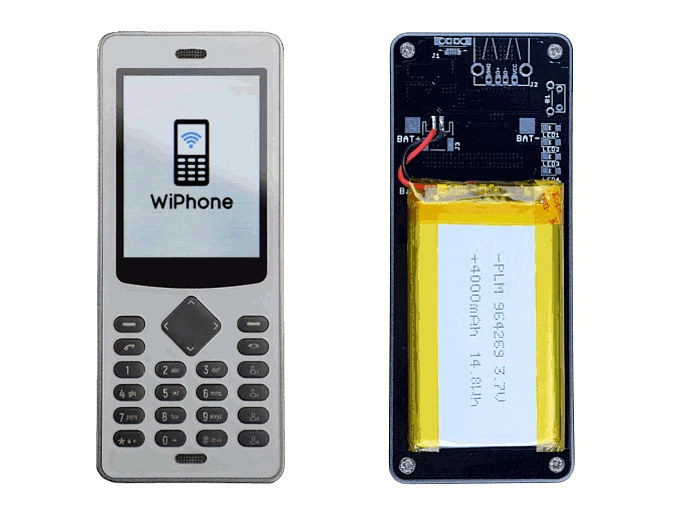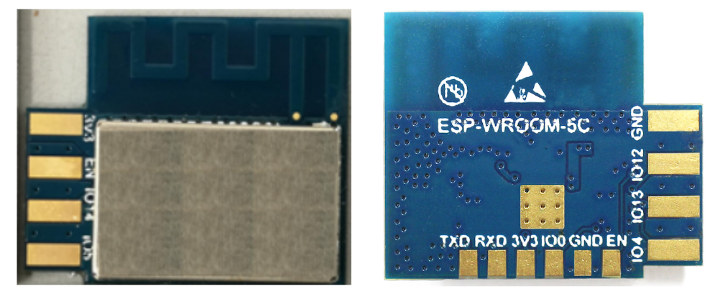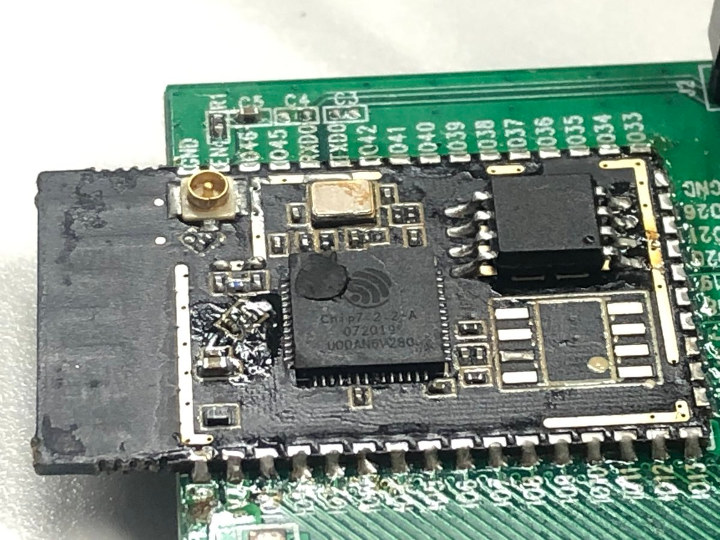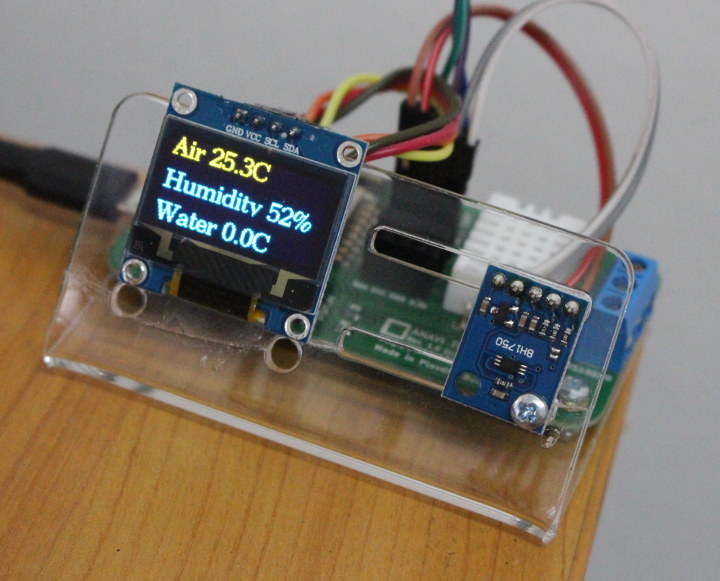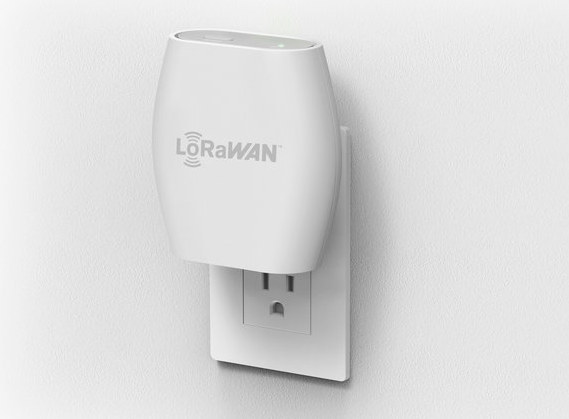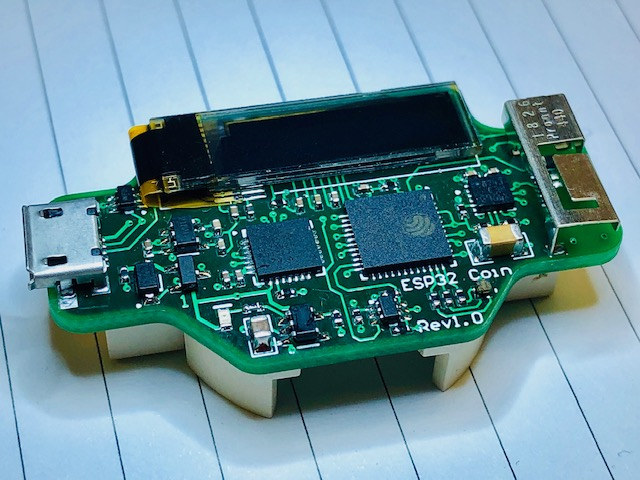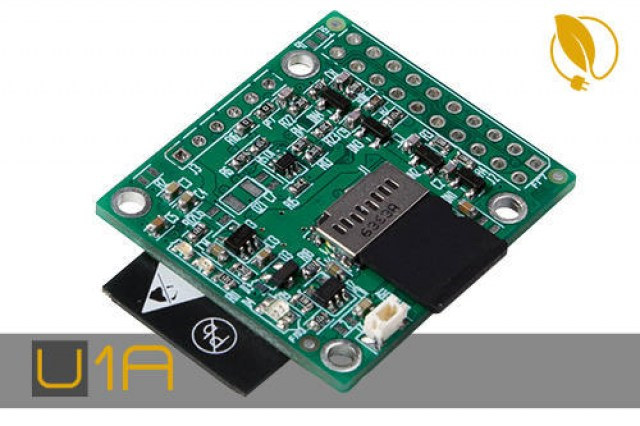WiPhone – pronounced as in Wi(reless) Phone – is a tiny VoIP phone made for makers and hardware hackers. The phone is based on ESP32 WiFi + Bluetooth SoC, is designed to be easily disassembled and modified both at the hardware and software level. It looks like an entry-level 2G/3G feature phone, except you can make only make phone calls over WiFi using a SiP account, as there’s no cellular modem. WiPhone specifications: SoC – Espressif ESP32 dual core Tensilica LX6 processor @ 240 MHz System Memory – 4MB PSRAM Storage – 16MB flash, microSD card slot Display – 2.4″ screen with 320×240 resolution Connectivity – 802.11b/g/n WiFi, Bluetooth 4.1 dual mode (BT not yet supported in software) Audio – 3.5mm audio jack USB – 1x micro USB port for charging, serial communication and firmware updates Expansion – 20-pin programmable header on back of phone with UART, SPI, I2C, PWM, […]
ESP-WROOM-5C is a Side-Mounted ESP8285 WiFi Module
You’d think by now we’d have enough ESP8266 or ESP8285 WiFi modules, but based on an FCC listing, we now know that Espressif Systems has been working on another ESP8285 WiFi module – ESP-WROOM-5C – designed to be side-mounted. ESP-WROOM-5C specifications: SoC – Espressif Systems ESP8285 Wi-Fi 802.11 b/g/n WiFi 4 @ 2412 MHz ~2462 MHz; Station/SoftAP/SoftAP + Station modes WPA/WPA2 security with EP/TKIP/AES encryption PCB antenna Peripheral interface I2C/IR Remote Control GPIO/PWM Operating voltage – 2.7V ~ 3.6V Operating current – Average: 80 mA Minimum current delivered by power supply – 500 mA Dimensions – 19 x 16 x 3.2 mm Temperature Range – -40°C ~ 105°C Reliability Tests – HTOL/HTSL/uHAST/TCT/ESD The module supports firmware upgrade over UART or OTA (Over-The-Air). Software development can be done with the IDF SDK for custom firmware, but “Cloud Server development” is also possible, and an Android/iOS app can be provided for user […]
Espressif “Chip 7” WiSoC May Support 5GHz WiFi
Espressif Systems has not released any new chips since the launch of ESP32 WiFi & Bluetooth SoC in 2016. But it looks like an new chip may be right around the corner, as John Lee from Espressif Systems teased us with a photo featuring a module equipped with “Chip 7” that should be released “soonish”. We really don’t know much about the chip except it comes in a 56-pin QFN package (4x 14 pins), and it won’t most likely be named Chip 7 once it is released. One Twitter user left a comment mentioning that it “looks like a bodged RF Filter. 5GHz mod?”. This reminded me of the potential ESP32-D0CD / ESP32-D2CD processors with dual band (2.4 + 5 GHz) WiFi. When I say “potential” it simply refer to the fact that ESP32 nomenclature has a “CD” connectivity option for WiFi ac/c/b/g/n and Bluetooth dual mode. But Espressif never […]
Getting Started with Temperature & Humidity Sensors on ESP8266 using ANAVI Thermometer
ANAVI Thermometer was launched on CrowdSupply in January. It is an ESP8266 WiFi board with a built-in DHT22 temperature and humidity sensor, support for external DS18B20 waterproof temperature sensor, as well as other sensors thanks to three I2C sensors. I received the ANAVI Thermometer starter kit last month, and I’ve only found time to play with it in the last few days. I’ll start with a unboxing, assembly guide, before showing it action, and I’ll try to make it interface with Home Assistant over MQTT. ANAVI Thermometer Starter Kit Unboxing The kit comes with ANAVI Thermometer board, a plastic stand, a USB to TTL debug board, an I2C OLED display, a few nuts and bolts, and a couple of KiCad and ANAVI stickers. Leon ANAVI also added a traffic light board and LEDs, but it’s not normally part of the kit 🙂 ANAVI Thermometer board include an ESP8266 module, AM2302 […]
FOSSASIA 2019 Schedule – March 14-17
As its name implies, FOSSASIA is a Free and Open Source Software event taking place every year in Asia, more specifically in Singapore. I first discovered it last year, and published a virtual FOSSASIA 2018 schedule last year to give an idea about the subjects discussed at the event. It turns out FOSSASIA 2019 is coming really soon, as in tomorrow, so I’m a bit late, but I’ll still had a look at the schedule and made my own for the 4-day event. Thursday – March 14, 2019 10:05 – 10:25 – For Your Eyes Only: Betrusted & the Case for Trusted I/O by Bunnie Huang, CTO Chibitronics Security vulnerabilities are almost a fact of life. This is why system vendors are increasingly relying on physically separate chips to handle sensitive data. Unfortunately, private keys are not the same as your private matters. Exploits on your local device still have […]
The Things Industries Announces $69 Indoor Multi-Channel LoRaWAN Gateway
If you ever see a cheap LoRaWAN gateway, chances are that it is a single channel gateway such as Dragino LoRa gateways that can be purchased for as low as $56. Those will work for your private network, but if others people try to use your gateway, some LoRa nodes will fail to connect. So what you really need is a multi-channel gateway for instance to connect it to The Things Networks. That would be $200 (and up), thank you very much. The IoT can only succeed on a large scale if costs are low enough, so Things Industries decided to design, and has now unveiled a low cost indoor multi-channel LoRaWAN gateway. Meet The Things Indoor Gateway. The Things Indoor Gateway specifications: SoC – Espressif System ESP8266 WiSoC Wireless Connectivity 802.11 b/g/n WiFi 4 via ESP8266 + PCB antenna LoRaWAN via Semtech 1308 chipset with Support for 868 MHz […]
ESP32 CoinCell is a Tiny, Coin Cell Powered ESP32 Pico D4 Board
ESP32 boards can easily be powered by batteries, either through an external USB battery shield, or direct connection to an ESP32 board fitted with battery charger circuitry. But Miek Rankin has done something a bit different, as he designed ESP32 Coincell board based on an ESP32 Pico D4 SiP (System-in-Package) powered by a rechargeable LIR2450 coin cell battery with 100mAh capacity. ESP32 CoinCell board specifications: SiP – Espressif Systems ESP32 Pico D4 Wifi/Bluetooth processor Connectivity 802.11 b/g/n WiFi up to 150 Mbps Bluetooth 4.1 LE On-board antenna Display – 0.69″ OLED display with 96×16 resolution USB – 1x micro USB port for charging and debugging (via CP2102N USB to TTL chip) Sensor – LIS3DHTR accelerometer Battery / Power Supply SE5218ALG-LF 500mA LDO power supply SL4054ST25P LiPo battery charger Socket for for LIR2450 (3.7V/100Mah battery) Consumption – 0.45mA in sleep mode Dimensions – Small If you don’t connect the battery, the board […]
Novasom SBC-U1 is a Tiny Industrial grade ESP32 Single Board Computer
Novasom Industries is an international company specializing in SBCs (Single Board Computers) with offices in Romania and the US. Most of their products are based on Arm and Intel processors, and they have two product lines their U-Line for low power IoT devices, and M-Line for applications requiring multimedia processing with various Rockchip, Qualcomm, and Intel processors. One model in the U-Line caught my attention, as beside an NXP i.MX6ULL SBC, the company is also offering an industrial temperature grade ESP32 SBC named SBC-U1 / SBC-U1A. SBC-U1/SBC-U1A board specifications: SoC – Espressif Systems ESP32 dual core Tensilica LX6 processor @ 240 MHz, 384KB RAM Storage – 4MB flash, micro SD card slot up to 32GB Connectivity – 802.11 b/n/g WiFi 4, Bluetooth 4.1 LE I/Os – 24-pin 2.54mm pitch header with up to 15 GPIO @ 3.3V, I2C, SPI, 2-ch 12-bit ADC, 2-ch 10-bit DAC, 2x protected inputs up to […]


